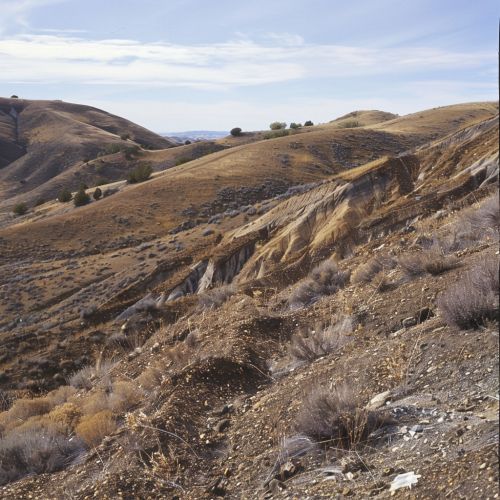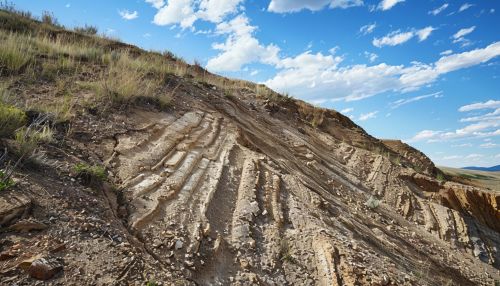Solifluction
Introduction
Solifluction is a type of mass wasting, or slope movement, that occurs in cold regions where the ground is subject to freeze-thaw cycles. It is a slow, continuous downslope movement of water-saturated soil and other material over an impermeable layer, such as permafrost, in response to the pull of gravity. This process is a significant factor in the shaping of landscapes in periglacial environments.


Process
Solifluction involves a complex interplay of climatic, hydrological, and geotechnical factors. It begins when the ground surface, saturated with water from melting snow or ice, thaws and becomes mobile above a still-frozen subsurface layer. The water cannot penetrate the frozen layer, leading to an oversaturation of the thawed soil. This oversaturation, combined with the pull of gravity, causes the soil to flow slowly downslope, creating characteristic lobes or terraces on the hillside.
Factors Influencing Solifluction
Several factors can influence the rate and extent of solifluction. These include the slope angle, soil type, vegetation cover, and the frequency and intensity of freeze-thaw cycles. Steeper slopes tend to experience faster solifluction rates, while the presence of vegetation can slow the process by stabilizing the soil. Furthermore, soils with high clay content are more prone to solifluction due to their lower permeability and higher water retention capacity.
Types of Solifluction
There are two main types of solifluction: gelifluction and plug solifluction. Gelifluction occurs when the active layer of soil above the permafrost becomes saturated with water and moves over the frozen ground. This type of solifluction is common in regions with continuous permafrost. On the other hand, plug solifluction involves the movement of discrete plugs or blocks of soil and is more common in areas with discontinuous or sporadic permafrost.
Effects and Significance
Solifluction plays a crucial role in the geomorphology of cold environments. It contributes to the formation of distinctive landforms such as solifluction lobes and terraces, and can also lead to the development of patterned ground features. Moreover, solifluction can have significant impacts on human activities and infrastructure in cold regions. Buildings, roads, and other structures can be damaged by the slow, persistent movement of the ground.
